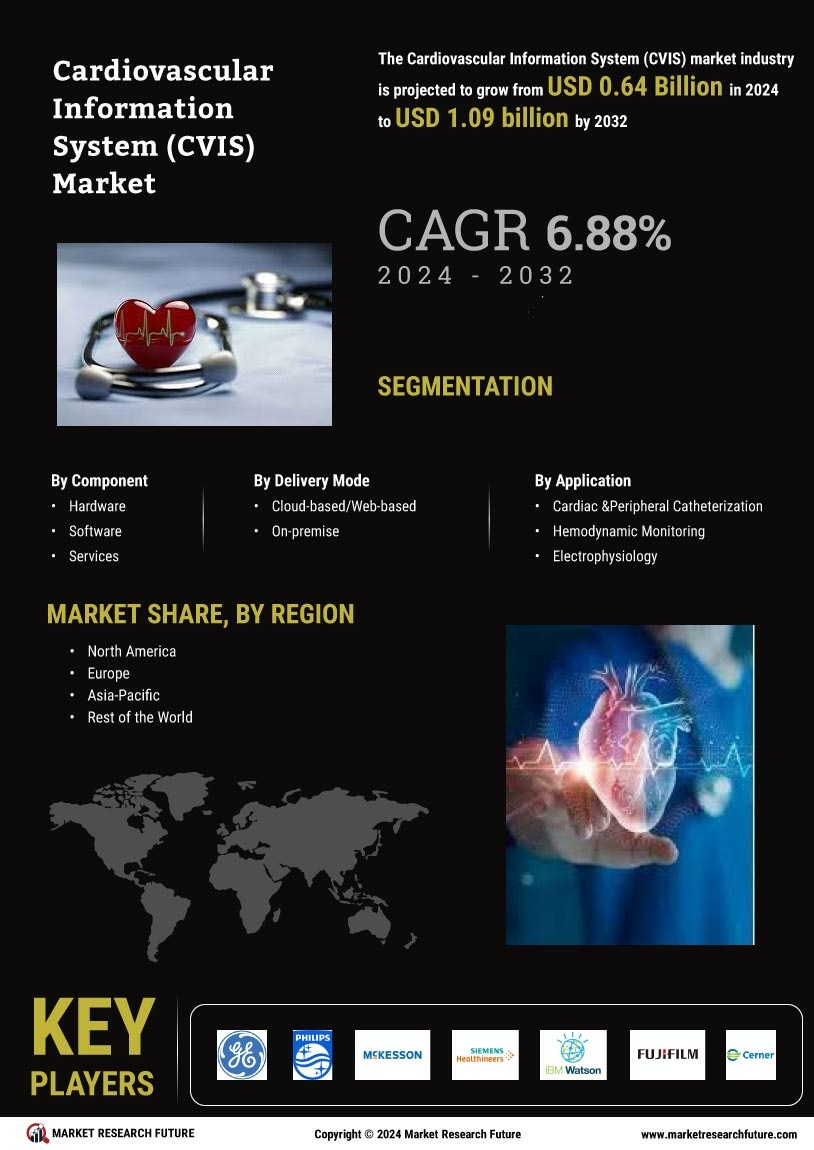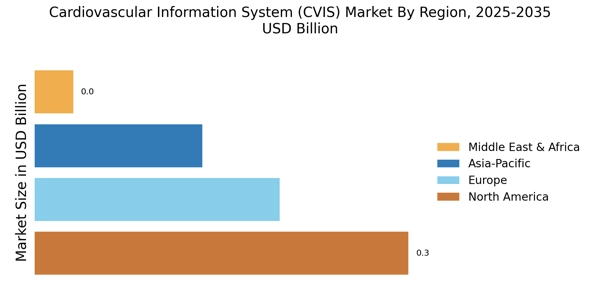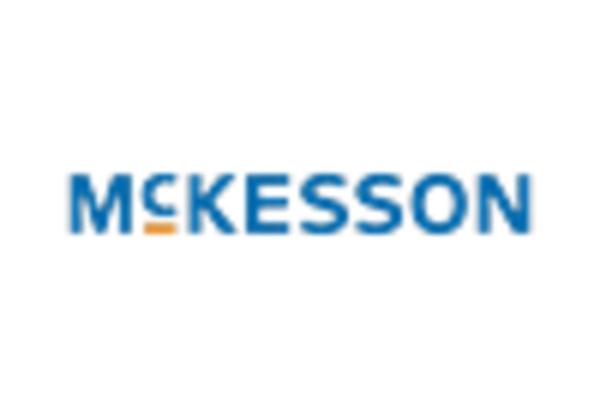Regulatory Compliance and Data Security
The emphasis on regulatory compliance and data security is a crucial driver for the Cardiovascular Information System Market (CVIS) Market. With the increasing amount of sensitive patient data being generated, healthcare organizations are under pressure to adhere to stringent regulations regarding data protection. Compliance with standards such as HIPAA and GDPR is essential for maintaining patient trust and avoiding legal repercussions. Consequently, CVIS solutions that prioritize data security features are in high demand. The market is likely to see a rise in investments aimed at enhancing cybersecurity measures within CVIS platforms. This focus on compliance not only safeguards patient information but also ensures that healthcare providers can operate efficiently within the legal frameworks, thereby fostering a more secure environment for cardiovascular care.
Technological Advancements in Healthcare
Technological innovations are significantly influencing the Cardiovascular Information System Market (CVIS) Market. The advent of sophisticated imaging technologies, telemedicine, and wearable health devices has transformed how cardiovascular health is monitored and managed. These advancements facilitate real-time data collection and analysis, enabling healthcare providers to make informed decisions swiftly. The market is witnessing a surge in the adoption of cloud-based CVIS solutions, which offer scalability and flexibility for healthcare institutions. Furthermore, the integration of artificial intelligence and machine learning into CVIS is enhancing predictive analytics capabilities, allowing for proactive patient management. As these technologies continue to evolve, they are expected to drive further growth in the CVIS market, providing healthcare professionals with the tools necessary to improve patient care.
Rising Prevalence of Cardiovascular Diseases
The increasing incidence of cardiovascular diseases is a primary driver for the Cardiovascular Information System Market (CVIS) Market. As the population ages and lifestyle-related health issues become more prevalent, healthcare providers are compelled to adopt advanced systems to manage patient data effectively. According to recent statistics, cardiovascular diseases account for a substantial percentage of global mortality rates, necessitating improved diagnostic and treatment solutions. This trend is likely to propel the demand for CVIS, as healthcare facilities seek to enhance patient outcomes through better data management and analytics. The integration of CVIS allows for streamlined workflows, which can lead to more efficient patient care and resource allocation, ultimately addressing the growing burden of cardiovascular diseases.
Increased Investment in Healthcare Infrastructure
The surge in investment in healthcare infrastructure is a significant driver for the Cardiovascular Information System Market (CVIS) Market. Governments and private entities are allocating substantial resources to enhance healthcare facilities, particularly in developing regions. This investment is aimed at modernizing medical equipment and adopting advanced information systems, including CVIS. As healthcare facilities expand and upgrade their capabilities, the demand for efficient data management systems becomes paramount. The CVIS market is likely to benefit from this trend, as healthcare providers seek to implement systems that can support the growing volume of cardiovascular patients. Enhanced infrastructure not only improves service delivery but also encourages the adoption of innovative technologies, further propelling the CVIS market forward.
Growing Demand for Integrated Healthcare Solutions
The demand for integrated healthcare solutions is reshaping the Cardiovascular Information System Market (CVIS) Market. As healthcare systems strive for interoperability, the need for CVIS that can seamlessly integrate with other health information systems is becoming increasingly apparent. This integration facilitates comprehensive patient management, allowing for a holistic view of patient health records. Healthcare providers are recognizing the value of interconnected systems that enhance collaboration among various departments, leading to improved patient outcomes. The market is witnessing a trend towards the development of CVIS that can interface with electronic health records and other clinical applications. This shift is expected to drive the growth of the CVIS market, as integrated solutions become essential for efficient healthcare delivery.


















Leave a Comment